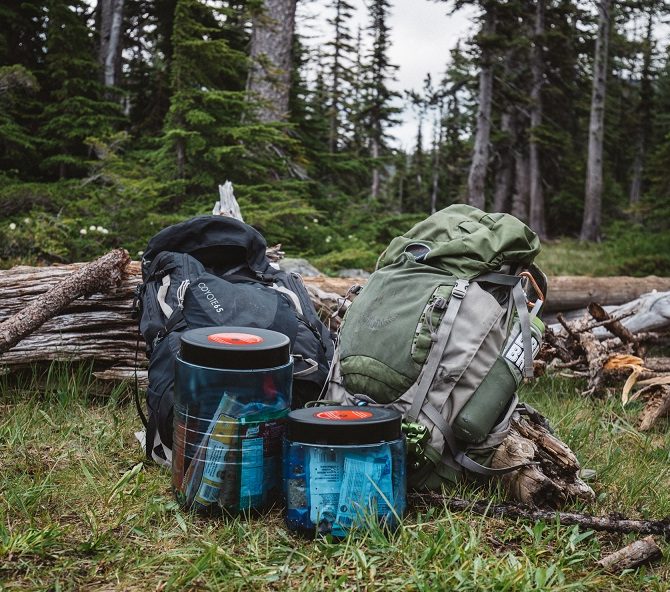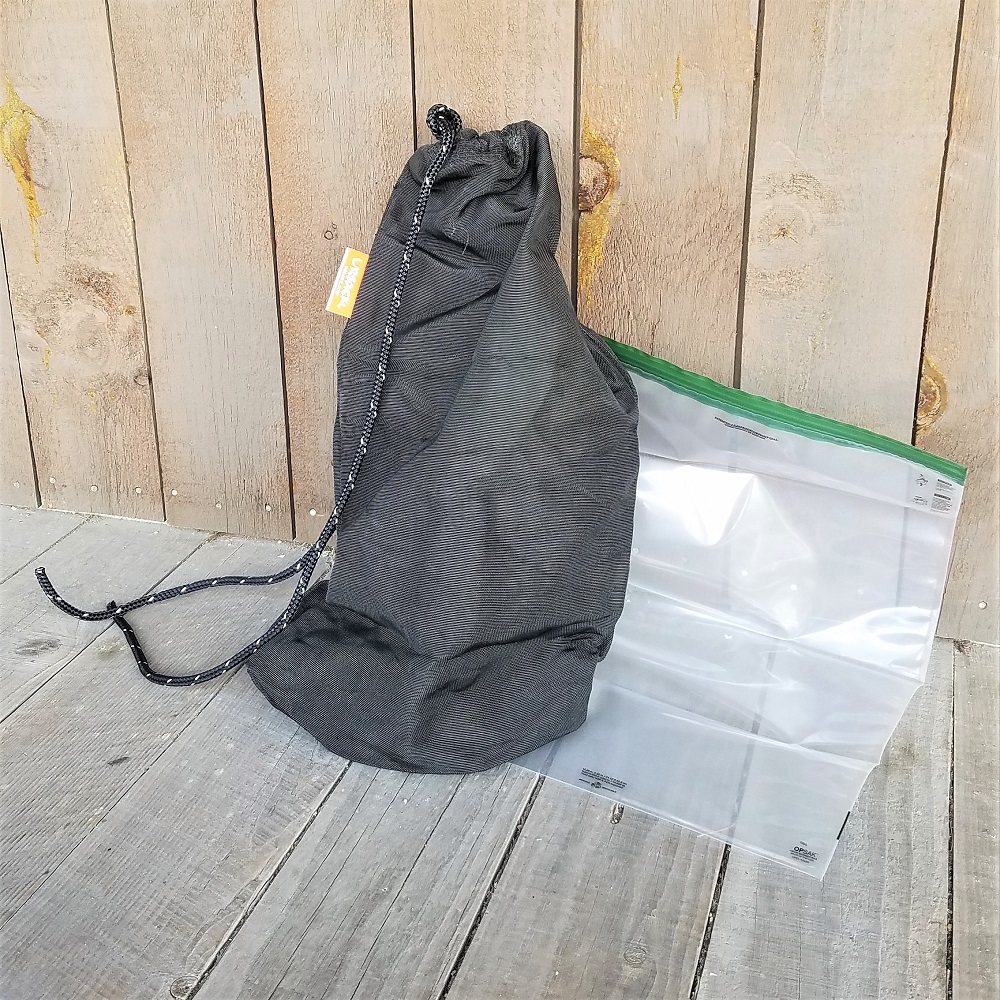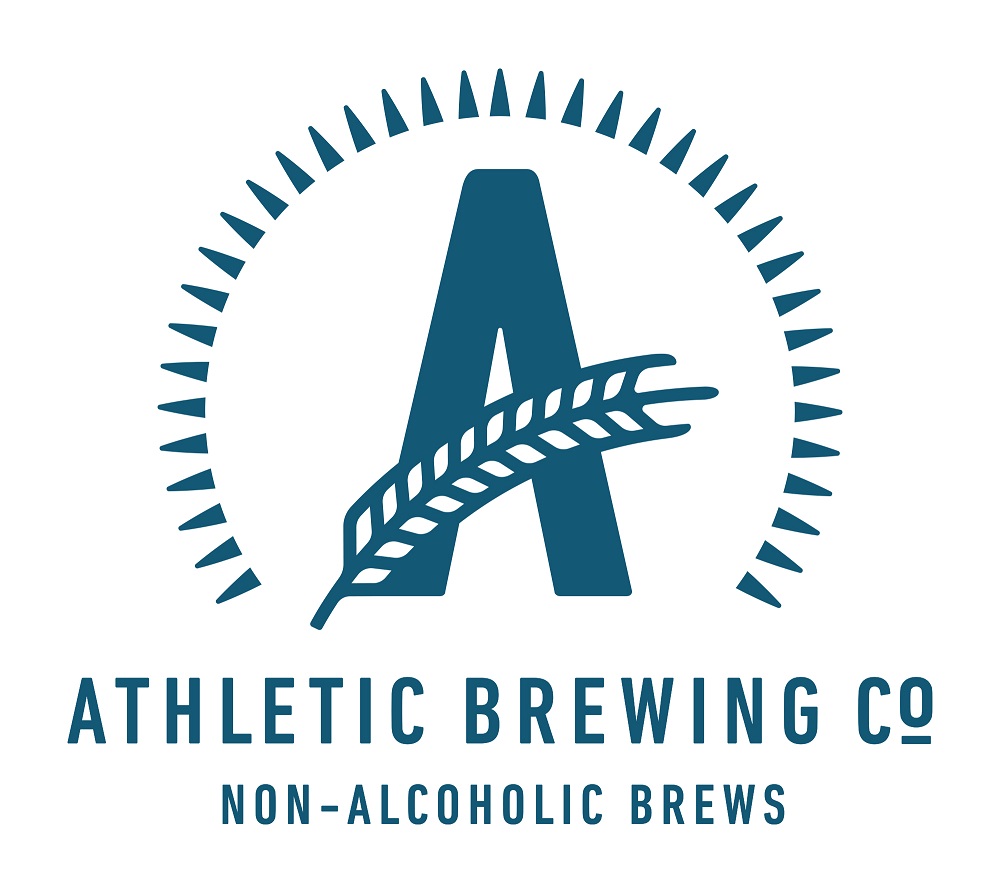
Forest Service officials announced July 23, 2019, that they are implementing a Forest Order for the entire Green Mountain National Forest (GMNF) geared toward minimizing black bear and human encounters and interactions. The order specifies proper food storage and prohibits leaving food or refuse on National Forest system lands in Vermont. The Order was issued to provide for visitor safety and the conservation of bears. See more information in the press release. This order is still in place in 2020.
The following acts and omissions are prohibited on the Green Mountain National Forest:
-
Except while being consumed, all food, food containers and refuse shall be stored in a closed motor vehicle or suspended at least twelve (12) feet above the ground and not less than six (6) feet horizontally from any object. Bear boxes and bear canisters designed specifically for food and/or refuse storage are acceptable.
-
All refuse containing food materials or containers shall be deposited in receptacles provided for that purpose, removed from the Green Mountain National Forest to be disposed of properly, or stored in the manner prescribed for food in #1 above (36 CFR 261.58(cc)).
What this boils down to for backpacking is you need to either hang your food and other smellable items, or use a bear box or personal bear can, and you need to carry out any and all trash that you create, including food scraps, because there are no trash cans on the trail. (Shelters, fire pits, privies, and bear boxes are not trash cans. Do not leave your trash or food scraps there.)
Bear boxes are not at many shelters on the Long Trail (see the list here), and depending on how many people are camped there, it’s possible they can fill up, so you need to have a personal food storage backup plan even at those sites. To clarify, it’s okay for your food to be in your pack while you are hiking with it or using it. But for overnight storage, and leaving your things unattended, you need to follow the storage regulations above.
The Long Trail is on Green Mountain National Forest most of its way from Massachusetts to Appalachian Gap, although GMC recommends taking these precautions everywhere in Vermont. Finding an appropriate tree along the Long Trail to hang food within the USFS regulation can be difficult, especially as you get into higher elevations. (And please note that hanging food inside a shelter is not an acceptable option.) A bear canister can be a great option to keep yourself and your food safe from bears.

Types of Bear Resistant Food Storage
There are many brands of bear canisters to choose from, but there are two main designs to consider: hard-sided or soft-sided.
Hard-sided:
- Pros: Can be very effective protection against bears.
- Cons: Heavier and bulkier than a soft-sided canister. It makes packing more difficult.
- Example: The BearVault is a commonly-used, lighter weight, and value-priced bear can.
Soft-Sided:
- Pros: Lighter and more compact than a hard-sided canister.
- Cons: Due to the soft nature of the bag, a bear can crush the food. Also, some parks or trails may not allow them, so it’s always a good idea to check with the managing organization before your trip. Currently, they are allowed throughout the Long Trail system.
- Example: The Ursack is a kevlar bear bag that bears can’t get into, and you can make it a stronger option with an OPSak (odor-proof bag) and aluminum liner.
Another feature to consider is the size of the canister. A smaller canister would suffice for a solo-hiking weekend warrior, but a family or someone out on a longer trip may opt for a bigger canister.
Check with your local land management jurisdiction about acceptable storage container options as they vary regionally. It is also a good idea to check the Interagency Grizzly Bear Committee website for approved personal food storage options.
Where to Find a Bear Can in Vermont
Since the Green Mountain National Forest Order is new, not many outfitters in Vermont carry bear cans yet, although most of them do carry stuff sacks and cord for hanging a bear bag. The outfitters we know of who currently carry bear cans are:
- Farm-Way, Bradford: Counter Assault Bear Keg
- Johnson Hardware, Rental, Farm & Garden, Johnson: Frontiersman Insider Bear Safe
- Onion River Outdoors, Montpelier: BearVault
- Outdoor Gear Exchange, Burlington: Counter Assault Bear Keg
- REI, Williston: Ursack, BearVault, Garcia
How to Pack a Bear Can
All of your food and anything with a scent (i.e. all toiletries including toothpaste, chapstick, and soap) will need to fit in the canister, so you may have to be more strategic about the amount and type of food you bring. Choose dense, high-calorie food with minimal packaging. Meal planning and pre-measuring amounts can also help save space. More useful packing tips can be found here.
For proper balance and comfort, try to place the canister in the center of your pack and close to your back. If you are not used to carrying a bear canister, you may have to rearrange your normal packing system to fit everything comfortably in your backpack.
How to Use a Bear Can
Bears are extremely smart and canisters are designed to keep them out, so opening and closing bear cans can be complex. Practicing how to use your canister before your trip is a good idea. (This is also a good time to make sure all your food and toiletries fit inside.)
Make sure to check the canister manufacturer’s instructions on how to properly use and store each option. Bear cans are successful at keeping food away from bears only if they are used properly.
Here are some general guidelines:
- For hard-sided canisters, make sure you leave it closed and locked correctly, and stash it at least 100 feet downwind from your—or anyone else’s—shelter, and ideally in a nook or cranny (for example, between tree roots or under a bush). Don’t put it near a cliff or water source to prevent a bear from knocking it over the ledge or into the water.
- For soft-sided canisters, a smell proof bag, like an OPSak, lining the sack to help further deter bears is recommended. Tie the cord in a tight knot with no food visible through the opening. Anchor the sack to a fixed object, like a tree, at least 100 yards from any shelter. Ursack has other “how to use” tips that are helpful.
Choosing and investing in a bear canister can be beneficial to your backpacking experience. It will provide ease of mind knowing your food is safely stored. You won’t have to take time finding a tree and setting up a bear hang. Most importantly, it will not only protect you and your food from bears, but it will also protect the bears from becoming so habituated that they need to be killed for human safety. Remember that we are in the bears’ home when we head out to the mountains and woods. Let’s be respectful visitors.



















BearVaults are no longer ideal in the Adirondacks, even tho Yellow-Yellow has been dead for years. I was there in August; two DEC rangers told me that a bear has learned to chew thru BearVault lids. Thus your BV should be out of sight and well off any trails.